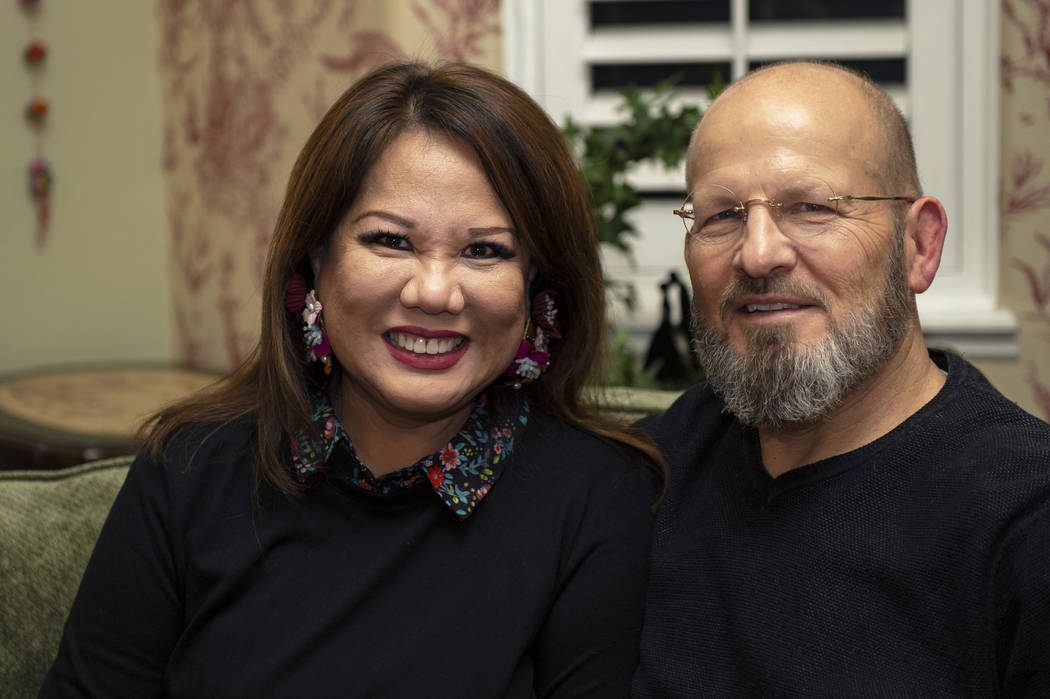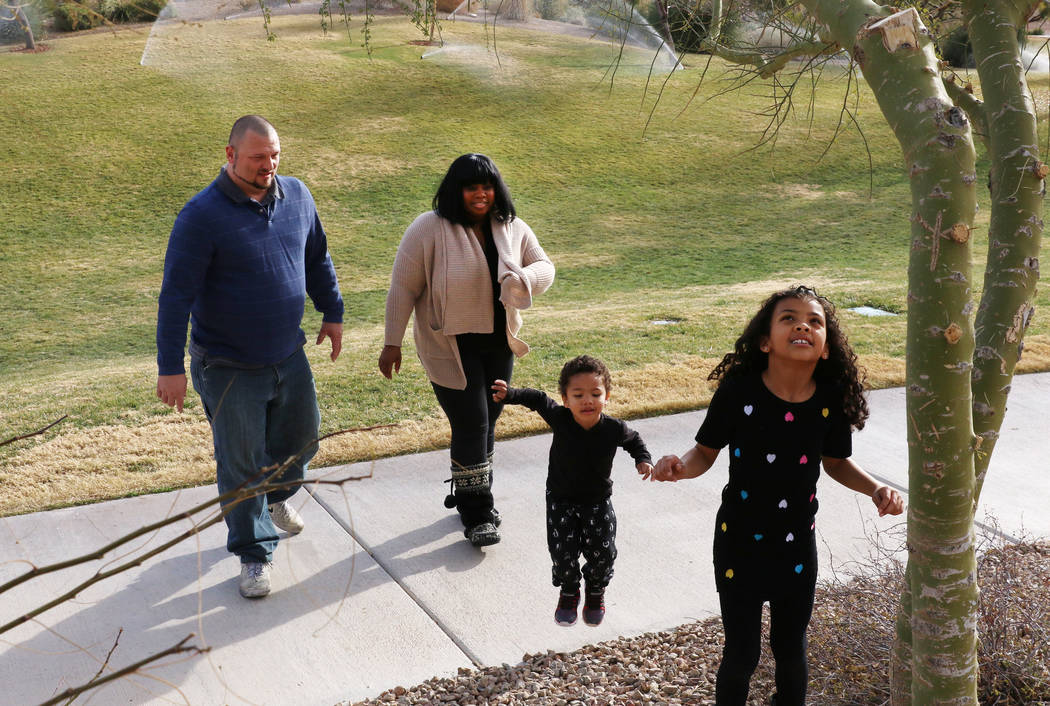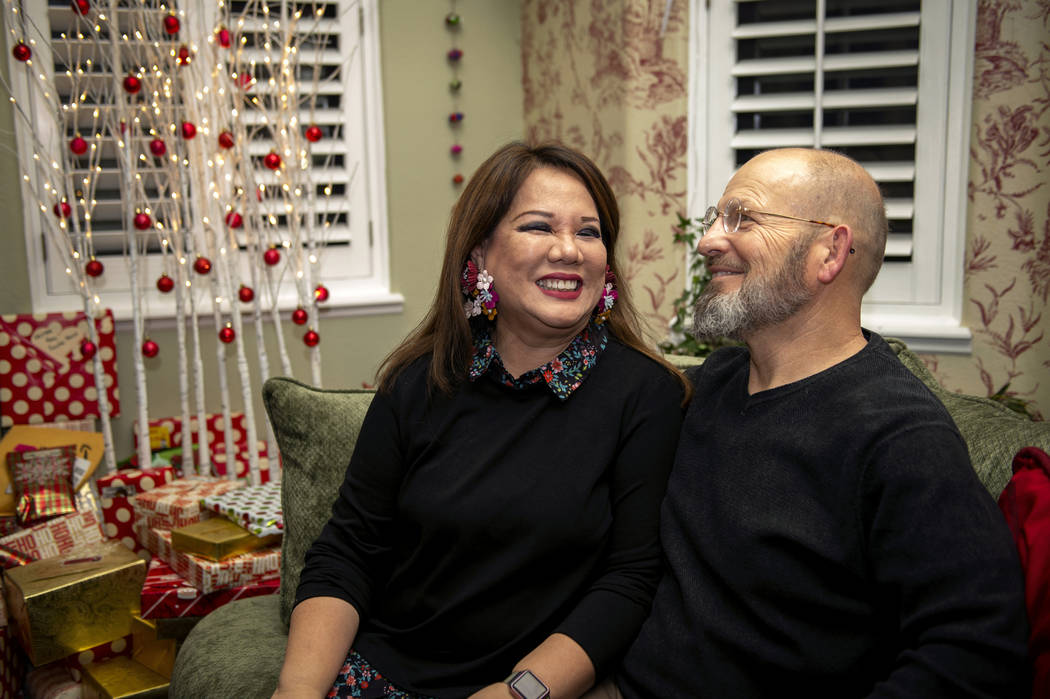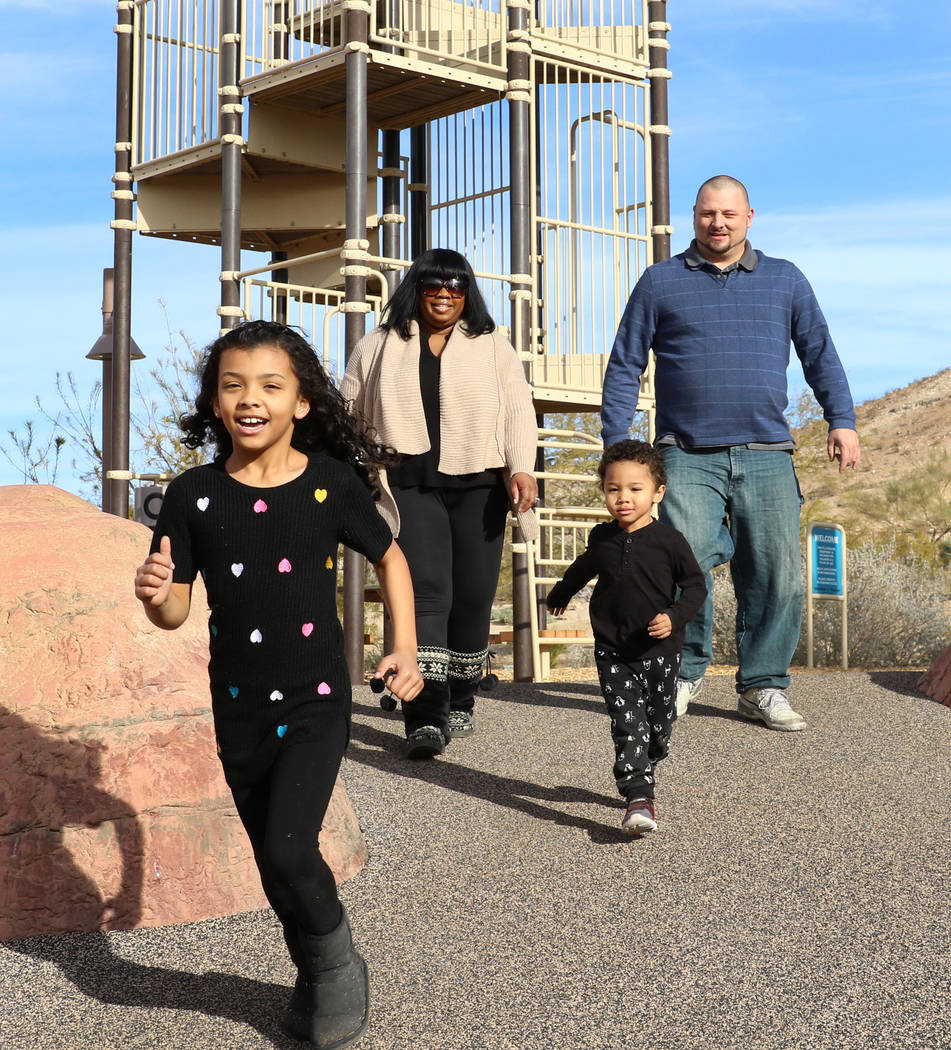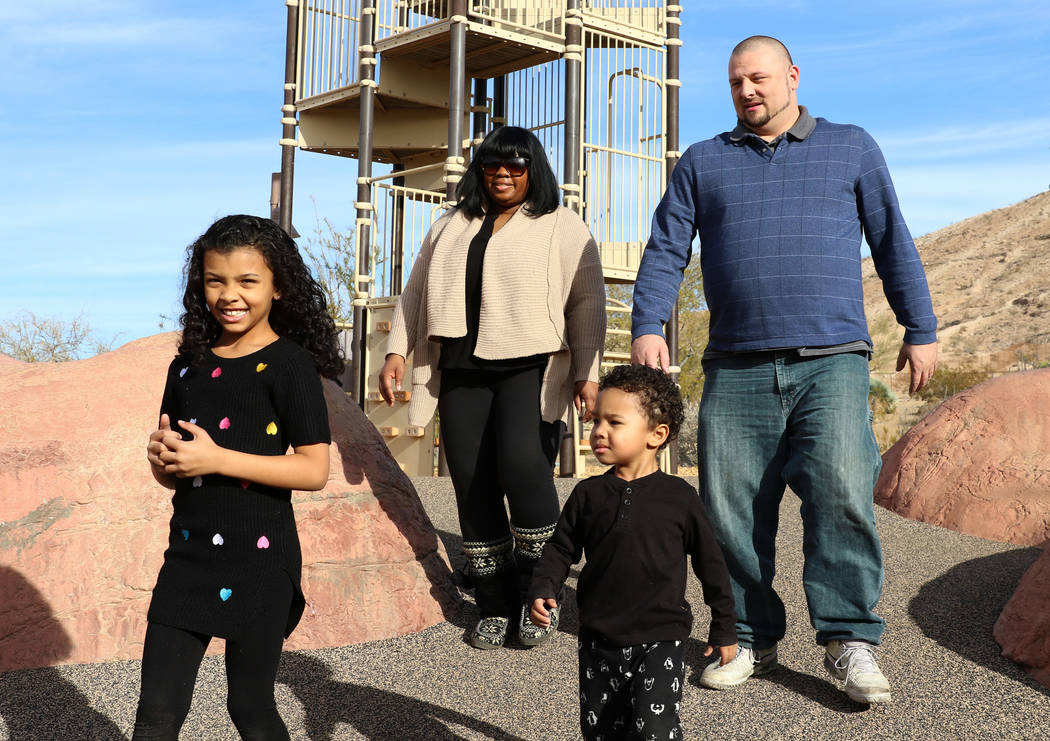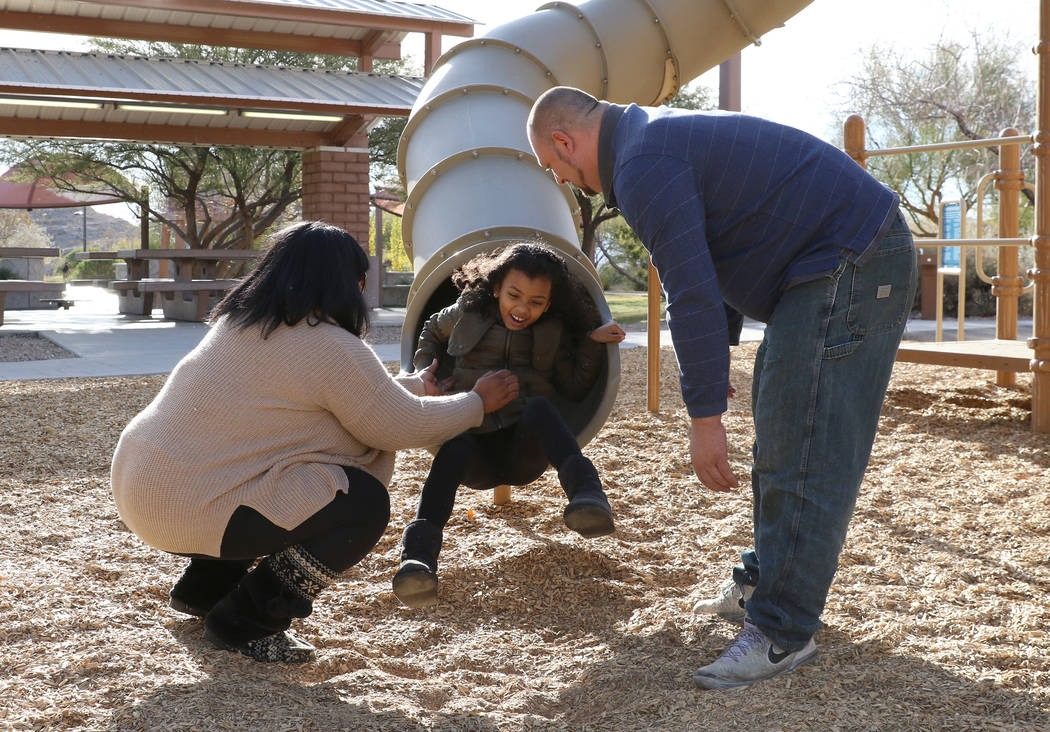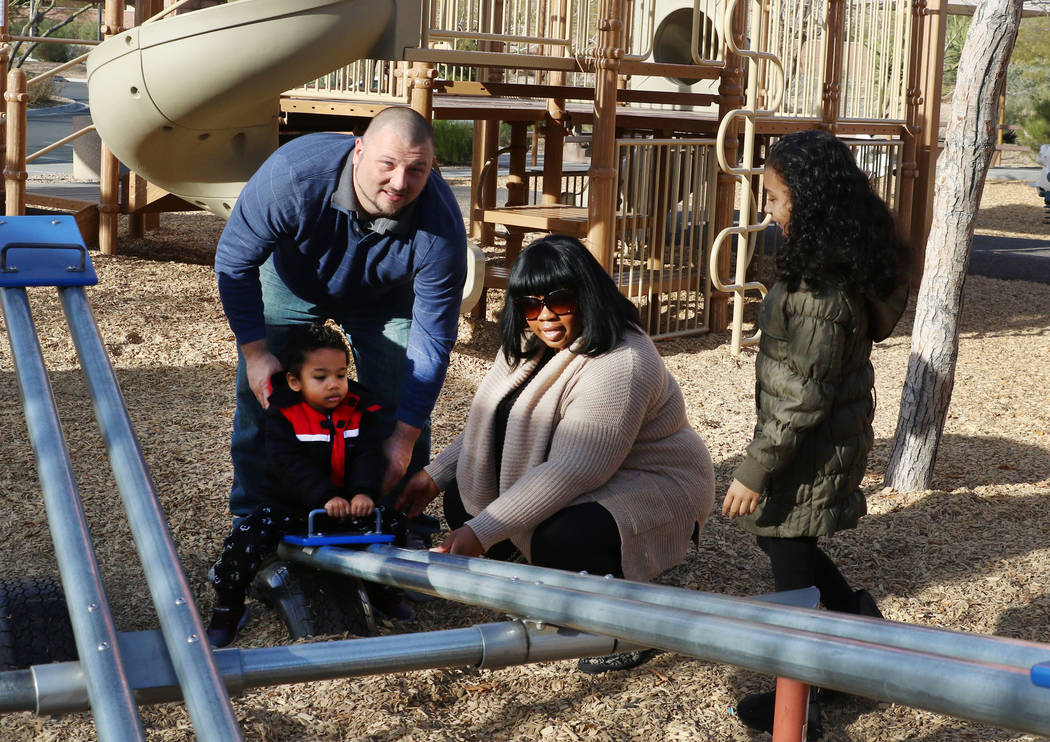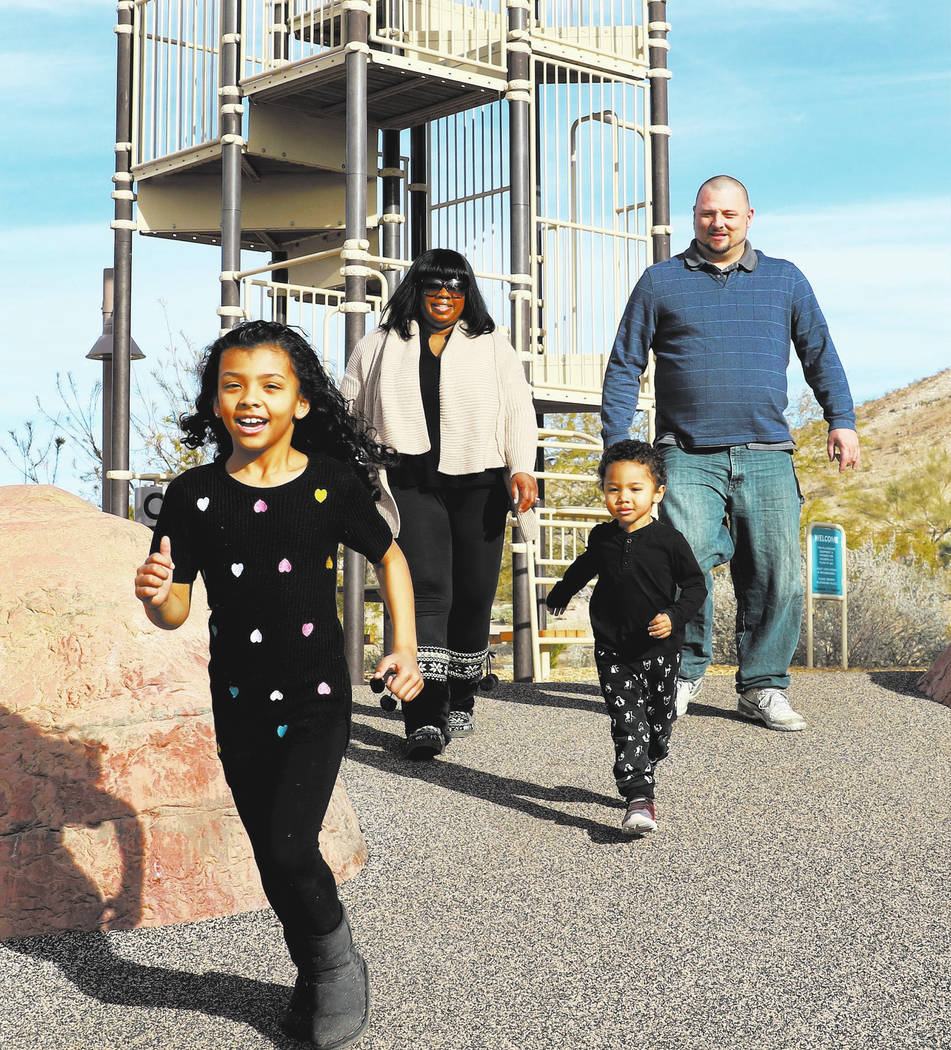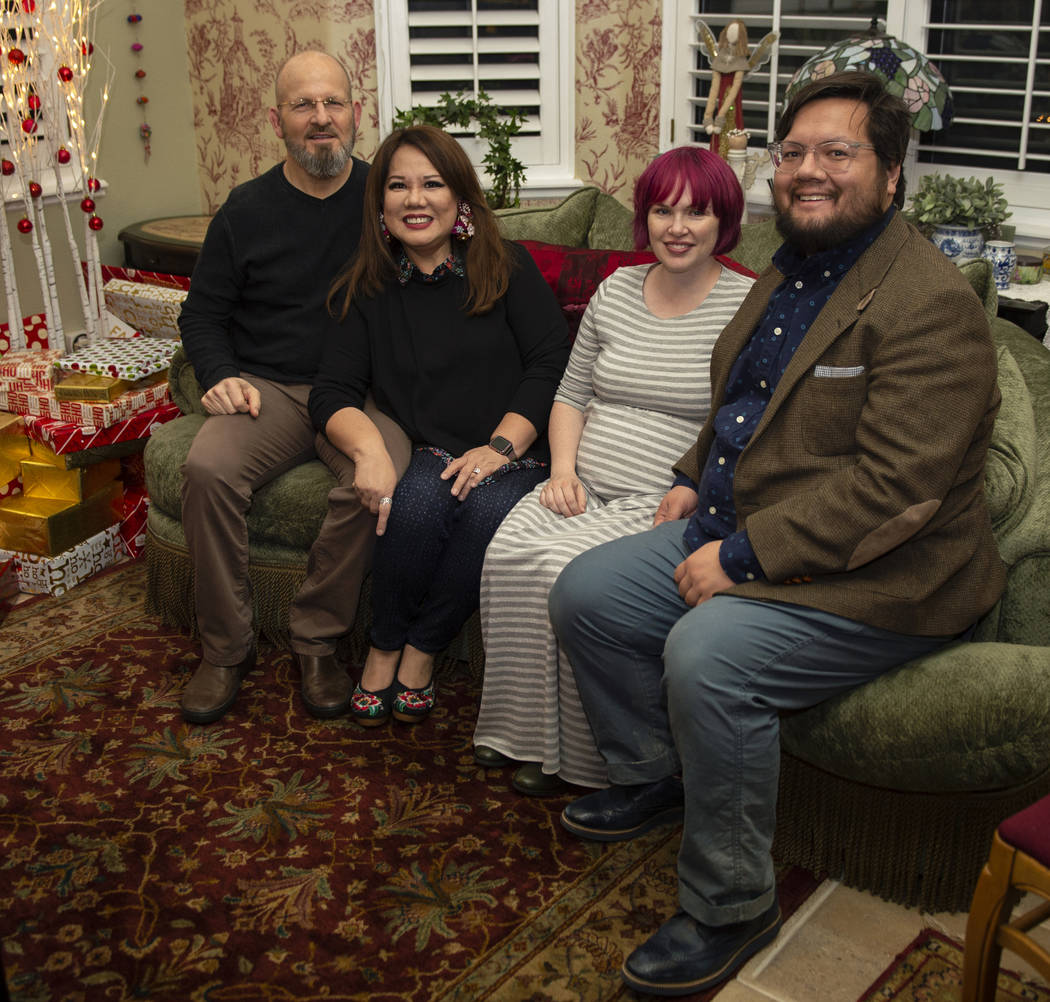Las Vegas has second-highest rate of interracial marriage in US
She was raised in Silicon Valley, the black daughter of two well-paid IBM employees. He was a white child who lived with his mother and grandmother in Las Vegas — some days not having enough money to eat — before moving back to a rural West Virginia county to finish high school.
Despite such different backgrounds, Erica Kyles and Kevin Pauley felt an immediate connection when a mutual friend introduced them at a Henderson gym in 2007.
“We went on a date, and that was it,” said Erica, 39, referring to the couple’s marriage at a Las Vegas Strip resort in March 2010. “We were really inseparable ever since.”
Erica and Kevin, now living in a southwest Las Vegas Valley suburb, are far from alone in their decision to wed. The Las Vegas metropolitan area has the second-highest rate of interracial marriage among U.S. metro areas, according to Pew Research Center findings published last year.
Almost 1 in 3 newlyweds here have a spouse of a different race or ethnicity, according to the analysis of U.S. Census Bureau data from 2011 through 2015. Only the Honolulu metro area ranked higher.
“Generally, intermarriage rates tend to be higher in places with more racial and ethnic diversity. Both Honolulu and Las Vegas would fall into that category,” Pew senior researcher Gretchen Livingston said. “The pool of potential spouses is just much more diverse.”
Indeed, less than half of the 2.1 million people living in the Las Vegas metro area identify as non-Hispanic white.
But a Bloomberg analysis of 2016 census data ranked Las Vegas as only the seventh most racially diverse metropolitan area in the U.S. (Honolulu came in first.)
Robert Lang, executive director of Brookings Mountain West at UNLV, said the fact that Las Vegas ranks higher in interracial marriage rates could be attributed to the fact it is less segregated than other metro areas — Houston, San Francisco and Washington, D.C., among them — that Bloomberg ranked as more diverse.
That’s in large part because the Las Vegas Valley’s population did not start to grow rapidly until after Congress passed the Fair Housing Act of 1968, Lang said. Dense development is another contributing factor.
“The more people are in one another’s lives, the lower the barriers for you to do anything together — to go to school together, to work together, to marry each other,” he said.
Babies becoming more diverse
Interracial marriage has become much more common across the nation since 1967, when the U.S. Supreme Court struck down remaining state laws banning it, according to further analysis by Pew Research Center.
The national rate of interracial marriage at that time was fewer than 1 in 30 newlyweds. By 2015, the rate had grown to about 1 in 6.
Henderson resident Christie Faux, a 63-year-old native Filipino, and her white husband, Kurt, 61, have been married long enough to see the trend develop.
The two members of the Church of Jesus Christ of Latter-day Saints met while attending Brigham Young University-Hawaii in summer 1980 and married the following June. Having lived in a state where interracial marriage was common, Christie said she didn’t truly realize their marriage was outside the norm until they moved to Kurt’s native Utah so he could attend law school the next year.
During his 10-year high school reunion, a former classmate leaned around Christie to ask if she spoke English. Christie, filled with anger and humiliation, left the party and sat in their car.
“The first thing I wanted to say was ‘I speak three languages. How many languages do you speak?’” she recalled.
The couple, with their four adult children, have since become part of another growing trend: having multiracial or multiethnic babies.
When they met in 1980, only 1 in 20 U.S. infants were multiracial or multiethnic, according to Pew. By the time their sixth and seventh grandchildren were born in 2015, the ratio was 1 in 7 infants.
Raising children came as another adjustment for Christie, who was raised by nannies and attended the prestigious Philippine Science High School System. Today, she said, she is proud to have been a stay-at-home mom who made sure all of her children learned to play two musical instruments and went on to attend graduate school.
Still, there’s a twinge of regret that she never taught her children to speak Tagalog. And while Christie said her grandchildren have sharp Filipino brains, their appearance bears little resemblance to her.
“You’re alive to see your race die and your culture die,” she said. “Inside there is a sadness about losing that. It’s something that you really do sacrifice for the sake of your children because you want them to have a better life.”
‘Your love is stronger’
Kevin, 38, and Erica have two children of their own, 7-year-old Meena and 2-year-old Charlie.
Erica said she feels blessed that her children are growing up immersed in two cultures instead of one.
“My kids love country music,” she said, laughing. “They probably wouldn’t have that if they were just rolling in the car with me.”
Most people the family meets are quick to compliment Meena and Charlie’s dark curly hair, but there have been a few stark reminders of discrimination.
During a recent father-son breakfast at a favorite restaurant an elderly white woman cursed at Kevin and Charlie for “mixing races” and refused to eat in the same restaurant. The manager showed the woman the door, but her hateful words still linger in Kevin’s mind.
Still, Erica said there undoubtedly have been far more good times than bad. She believes any adversity the family faces makes them stronger.
“I say don’t care about what anyone else thinks. Your love is stronger than anyone else’s opinion,” she said. “Being in an interracial relationship isn’t any different than any other relationship when it comes to love.”
Contact Michael Scott Davidson at sdavidson@reviewjournal.com or 702-477-3861. Follow @davidsonlvrj on Twitter.



